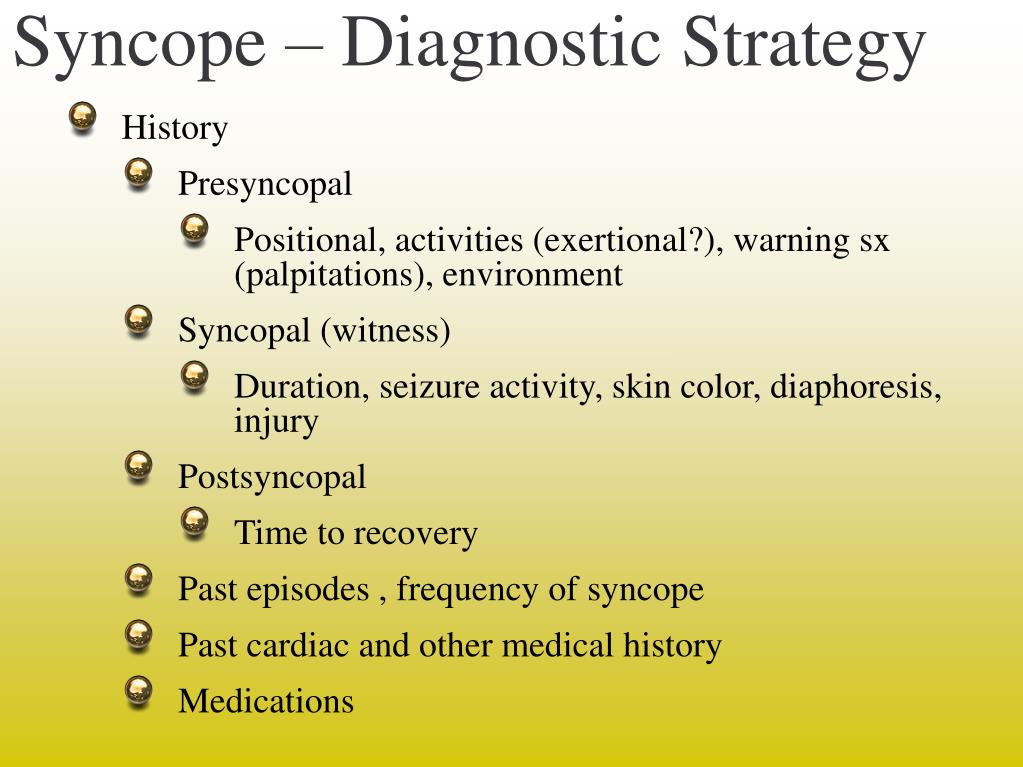

In some, the heart rate lowers (bradycardia) at a time when the blood vessels should constrict and the heart rate should increase.This leads the blood vessels to relax (vasodilation) when they should not. Changes in the normal involuntary (autonomic) reflex.These account for more than 90 percent of fainting in childhood. The most common cause of syncope during childhood is vasovagal syncope or neurocardiogenic syncope. Vasovagal Syncope or Neurocardiogenic Syncope

Reduced heart function (ventricular dysfunction from dilated cardiomyopathy inflammatory diseases such as acute myocarditis and Kawasaki disease and ischemic heart disease secondary to an anomalous coronary artery, Kawasaki's disease, or hypercholesterolemia).Abnormal heart rhythms (ventricular tachycardia, Wolff-Parkinson-White syndrome, long QT syndrome, sinus node dysfunction, atrioventricular block, catecholaminergic polymorphic ventricular tachycardia).Cardiac causes can be secondary to blockage of blood flow ( aortic valvar stenosis, hypertrophic cardiomyopathy, primary pulmonary hypertension, Eisenmenger's syndrome).There are a wide range of treatment options for many heart issues though. Though rare this causes the most concern, because the cardiac cause can be life-threatening. Some uncommon causes for fainting in children and adolescents are heart (cardiac) problems, seizures or other neurologic problems, and stress.įainting caused by heart issues during childhood is rare. These reasons can often be figured out through a detailed history and an exam by their doctor. Other reasons for fainting in children and adolescents are much less common. Syncope is only one reason someone can faint. For a moment, the brain does not have the needed amount of oxygen. Causes of Syncopeįainting (syncope) is caused by a sudden decrease in blood pressure. It is more common to have these symptoms when it is hot or when changing positions from sitting or lying down to standing. Many patients complain of these symptoms without syncope. Symptomsĭizziness, muffled hearing and visual changes (such as “blacking out”) often happen before fainting. This is often due to the fear that those who faint are at risk for sudden death. Around 20 percent of young adults report having fainted at least one time.ĭespite being common, fainting can cause a great deal of worry for patients and their caregivers. Fainting (syncope) is common during childhood in healthy adolescents and young adults.


 0 kommentar(er)
0 kommentar(er)
